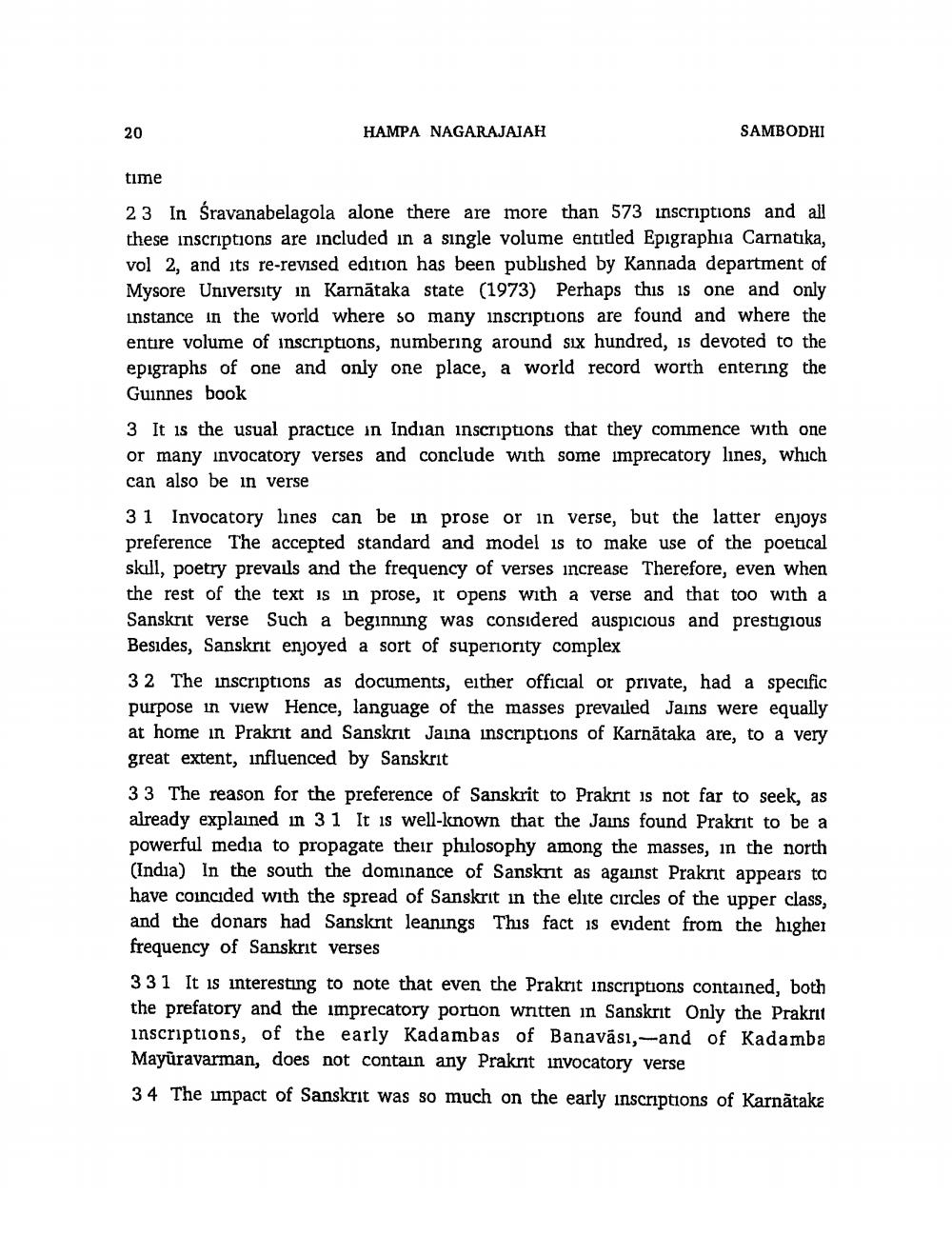________________
20
HAMPA NAGARAJAIAH
SAMBODHI
time
23 In Śravanabelagola alone there are more than 573 inscriptions and all these inscriptions are included in a single volume entitled Epigraphia Carnatika, vol 2, and its re-revised edition has been published by Kannada department of Mysore University in Karnataka state (1973) Perhaps this is one and only instance in the world where so many inscriptions are found and where the entire volume of inscriptions, numbering around six hundred, is devoted to the epigraphs of one and only one place, a world record worth entering the Guinnes book
3 It is the usual practice in Indian inscriptions that they commence with one or many invocatory verses and conclude with some imprecatory lines, which can also be in verse
31 Invocatory lines can be in prose or in verse, but the latter enjoys preference The accepted standard and model is to make use of the poetical skill, poetry prevails and the frequency of verses increase Therefore, even when the rest of the text is in prose, it opens with a verse and that too with a Sanskrit verse Such a beginning was considered auspicious and prestigious Besides, Sanskrit enjoyed a sort of supenonty complex
32 The inscriptions as documents, either official or private, had a specific purpose in view Hence, language of the masses prevailed Jains were equally at home in Prakrit and Sanskrit Jaina inscriptions of Karnataka are, to a very great extent, influenced by Sanskrit
33 The reason for the preference of Sanskrit to Prakrit is not far to seek, as already explained in 31 It is well-known that the Jains found Prakrit to be a powerful media to propagate their philosophy among the masses, in the north (India) In the south the dominance of Sanskrit as against Praknit appears to have coincided with the spread of Sanskrit in the elite circles of the upper class, and the donars had Sanskrt leanings This fact is evident from the higher frequency of Sanskrit verses
331 It is interesting to note that even the Prakrit inscriptions contained, both the prefatory and the imprecatory portion written in Sanskrit Only the Prakrit inscriptions, of the early Kadambas of Banavası,-and of Kadamba Mayuravarman, does not contain any Praknt invocatory verse
34 The impact of Sanskrit was so much on the early inscriptions of Karnataka




